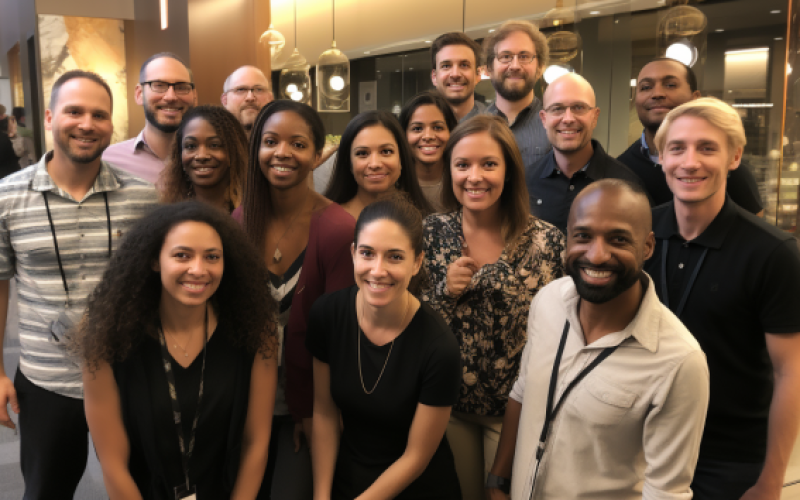Many technology leaders believe that combining principles from both waterfall and Agile methodologies offers the advantages of both approaches. In practice, this fusion often proves to be less than ideal.
“Wagile” emerges when the agile methodology is implemented on top of the existing waterfall methodology,. It gives a feeling of fair compromise offering the advantages of both. However, in practice, it often leads to lots of confusion in the newly formed Agile Teams and their stakeholders.
When it comes to agile transformations, most organizations fall short of expectations. Shifting from one methodology to another is a substantial endeavor, but the initial investment will eventually deliver the results you originally aimed for.
Here are 10 lessons from the book “Coaching Agile Teams” by Lyssa Adkins that should help you in moving away from Wagile into working Agile setup.
- Understanding the Agile Coach Role: Understanding the Agile coach role is fundamental to the success of Agile transformations. Unlike traditional managers or leaders, Agile coaches don’t make decisions for the team. They act as facilitators and mentors, guiding the team toward self-organization and self-management. Agile coaches should be aware of their role’s boundary and resist the urge to directly intervene in the team’s work. Instead, they foster an environment where teams can thrive and make their own decisions. This understanding is critical for avoiding micromanagement and supporting a culture of empowerment.
- Servant Leadership: Servant leadership is a core concept in Agile coaching. It involves putting the needs of the team first and supporting them in achieving their goals. Agile coaches serve as a resource for teams, removing impediments, and providing guidance when requested. This approach creates a sense of ownership and accountability within the team, promoting self-organization and continuous improvement. It’s important for coaches to practice humility, active listening, and empathy, as these qualities are central to being effective servant leaders.
- The Agile Mindset: Adopting an Agile mindset goes beyond just following Agile practices. It means internalizing Agile values and principles, such as customer collaboration, responding to change, and valuing individuals and interactions. Agile coaches should encourage teams to embrace this mindset, which promotes adaptability and a focus on delivering value. It’s not about checking off boxes on a list of Agile practices but rather understanding the underlying principles that drive Agile success.
- Team Development: Teams go through various stages of development, such as forming, storming, norming, performing, and adjourning (as described by Tuckman’s model). Agile coaches play a critical role in helping teams progress through these stages. This involves addressing conflicts during the storming phase, setting team norms in the norming phase, and enabling high performance during the performing phase. Understanding and actively facilitating this progression is essential for team success.
- Coaching Competencies: Effective coaching requires a set of competencies, including active listening, powerful questioning, and creating awareness. Active listening involves not only hearing what team members say but also understanding the emotions and context behind their words. Powerful questioning helps stimulate critical thinking and self-discovery within the team. Creating awareness involves helping the team see its own strengths and weaknesses. These competencies are vital for building trust and facilitating meaningful conversations within Agile teams.
- Systems Thinking: Systems thinking is the ability to understand the larger organizational system in which Agile teams operate. Agile coaches need to recognize how decisions made at the organizational level can impact the team’s ability to deliver value. This includes addressing constraints, dependencies, and any impediments that might hinder the team’s progress. Coaches need to work at both the team and organizational levels to ensure alignment and minimize friction within the larger system.
- Coaching Agile Roles: Different Agile roles, such as Scrum Masters, Product Owners, and Development Teams, have unique responsibilities. Agile coaches should tailor their coaching approach to suit the needs of these roles. For example, a Scrum Master may need guidance on facilitating Scrum events, while a Product Owner may require assistance in managing the product backlog. Understanding these roles and offering role-specific coaching is essential for maximizing their effectiveness within the Agile framework.
- Conflict Resolution: Conflict is a natural part of team dynamics, and Agile coaches must be equipped to address it constructively. This involves facilitating open and honest conversations and helping teams reach resolutions that support their goals. Effective conflict resolution promotes a healthy team environment and fosters trust among team members. Coaches should encourage teams to embrace differing viewpoints and see conflict as an opportunity for growth and learning.
- Coaching the Coach: Agile coaches should not only focus on coaching teams but also invest in their own growth and development. This means seeking feedback from peers and leaders, participating in communities of practice, attending training, and continually refining their coaching skills. A coach who is committed to personal growth is better equipped to inspire and guide others.
- Measuring Success: Measuring the success of Agile coaching can be challenging, as it often involves intangible outcomes. Rather than focusing solely on adherence to Agile practices, coaches should emphasize the impact on business results, team performance, and overall culture. Metrics like increased customer satisfaction, faster delivery, and improved team morale can provide a more meaningful measure of success. Agile coaches should work with teams and stakeholders to define and track these outcomes and adapt their coaching strategies accordingly.




